

Genetics. Genetics (from the Ancient Greek γενετικός genetikos meaning "genitive"/"generative", in turn from γένεσις genesis meaning "origin"),[1][2][3] a field in biology, is the science of genes, heredity, and variation in living organisms.[4][5] Mendel observed that organisms inherit traits by way of discrete "units of inheritance".

This term, still used today, is a somewhat ambiguous definition of a gene. A more modern working definition of a gene is a portion (or sequence) of DNA that codes for a known cellular function. This portion of DNA is variable, it may be small or large, have a few subregions or many subregions. The word "gene" refers to portions of DNA that are required for a single cellular process or single function, more than the word refers to a single tangible item. Genetics acts in combination with an organism's environment and experiences to influence development and behavior. History[edit] DNA, the molecular basis for biological inheritance. Molecular genetics[edit] James D. Recessive. A classic example of dominance is the inheritance of seed shape (pea shape) in peas.
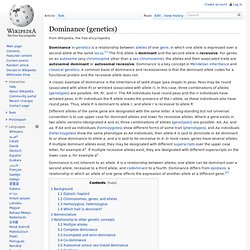
Peas may be round (associated with allele R) or wrinkled (associated with allele r). In this case, three combinations of alleles (genotypes) are possible: RR, Rr, and rr. The RR individuals have round peas and the rr individuals have wrinkled peas. In Rr individuals the R allele masks the presence of the r allele, so these individuals also have round peas. Thus, allele R is dominant to allele r, and allele r is recessive to allele R. Different alleles of the same gene are designated with the same letter. Dominance is not inherent to an allele. Most familiar animals and some plants have paired chromosomes, and are described as diploid.
Subterranean. Hollow Earth Hypothesis - Subterranean Civilizations - Agartha. Hollow Earth Hypothesis As science and science fiction merge, we unravel the ancient mysteries of the human experience.

If indeed entities exist beneath the surface of the planet, they would not live in molten rock but in space ships. And as the tectonic plates are breaking - it is either by their doing, a knowing that the consciousness hologram that creates this reality, is ending so they no longer have to monitor from below, or they emerge as the plates naturally break apart.
Hollow Earth Theories always propose a central sun, aliens, and mythical subterranean cities and civilizations that some believe could link science and pseudoscience if physically discovered. Glaciers at both the Arctic and Antarctic regions are melting down at an accelerated rate, which will reveal the truth behind this mystery and its metaphoric connections to other creation myths in the story of humanity's journey on plant Earth. Underground civilizations link with the 'Hollow Earth Theory'. Early History Gravity. Vril. Vril, the Power of the Coming Race is an 1871 novel by Edward Bulwer-Lytton, originally printed as The Coming Race.
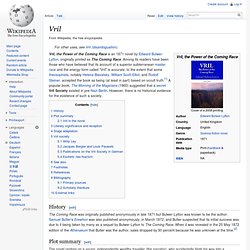
Subterranean Worlds. Are there "lost" subterranean civilizations?

Are there pockets of Hollow in which people live? Are there ancient races of beings who view us as "surface dwellers"? Are there vast ancient tunnel-systems below earth? And what about modern day subterranean tunnels and buildings built by governments without public knowledge? I want to re-explore these questions because, after having dismissed the whole issue a few years ago, I came across some inconsistencies. 1. Most are aware that nearly all ancient mythologies refer to a "Underworld".
Look at all the cultures that had names for the Underworld: Subterranean Tunnels - Underground Alien Bases. , in his book The Chronicle of Akakor (Delacorte Press., N.Y., 230 pp), gives the history - as given to the author by one of their chiefs - of the tribesman, whose ancestors were allegedly part of a vast empire which covered South America in ancient times.
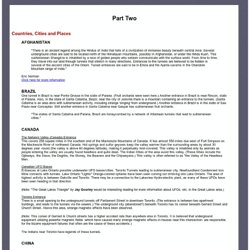
Some of these ancient people, the chief claimed, left the planet in to explore other parts of the solar system and beyond, leaving behind In 1971, due to the constant encroachment of white settlers or invaders into their territory, 30,000 survivors of the allegedly escaped to this ancient system of underground cities, consisting of 13 separate subterranean complexes all connected by tunnels, one of which is said to extend to Lima, and others of which are located throughout the Andes Mountain range of Peru. {*style:<b>GOVERNMENT MAP OF UNDERGROUND TUNNELS </b>*} These areas were found off a government map showing just some of the underground bases in the United States. In Arizona we have sites at Wickiup and Page. {*style:<b>Arkansas.
Extraterrestrial life. The official U.S. government position on extraterrestrial life and the three major efforts to search for it.
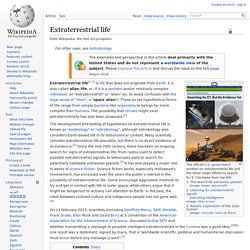
Clockwise from top left: The development and testing of hypotheses on extraterrestrial life is known as "exobiology" or "astrobiology", although astrobiology also considers Earth-based life in its astronomical context. Many scientists consider extraterrestrial life plausible, but there is no direct evidence of its existence.[2] Since the mid-20th century, there has been an ongoing search for signs of extraterrestrial life, from radios used to detect possible extraterrestrial signals, to telescopes used to search for potentially habitable extrasolar planets.[3] It has also played a major role in works of science fiction. Science fiction works, especially Hollywood's involvement, has increased over the years the public's interest in the possibility of extraterrestrial life. §Background §Possible basis §Biochemistry All life on Earth is based upon 26 chemical elements. National UFO Reporting Center.
Latest-UFO-Sightings. UFO SIGHTINGS DAILY. Pantheon (gods) In religious belief, a deity ( i/ˈdiː.ɨti/ or C.
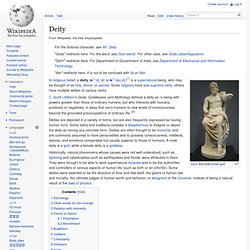
Scott Littleton's Gods, Goddesses, and Mythology defined a deity as "a being with powers greater than those of ordinary humans, but who interacts with humans, positively or negatively, in ways that carry humans to new levels of consciousness beyond the grounded preoccupations of ordinary life. "[2] Historically, natural phenomena whose causes were not well understood, such as lightning and catastrophes such as earthquakes and floods, were attributed to them. Etymology[edit] The word "deity" derives from the Latin deus ("god"), which is related through a common Indo-European origin to Sanskrit deva ("god"), devi ("goddess"), divya ("transcendental", "spiritual").
Other words for the concept[edit] God. In monotheism and henotheism, God is conceived as the Supreme Being and principal object of faith.[1] The concept of God as described by theologians commonly includes the attributes of omniscience (infinite knowledge), omnipotence (unlimited power), omnipresence (present everywhere), omnibenevolence (perfect goodness), divine simplicity, and eternal and necessary existence.
